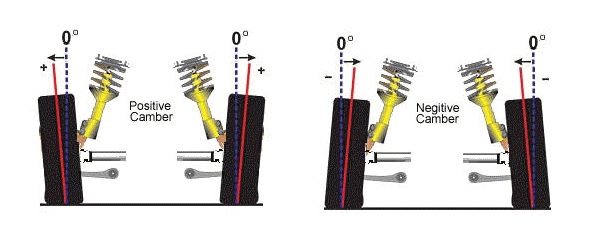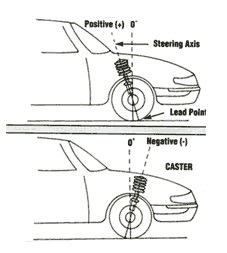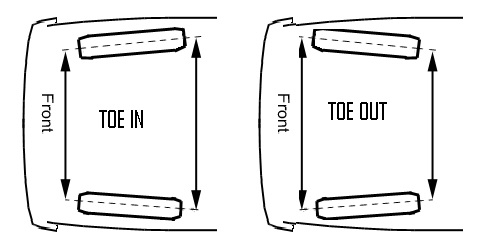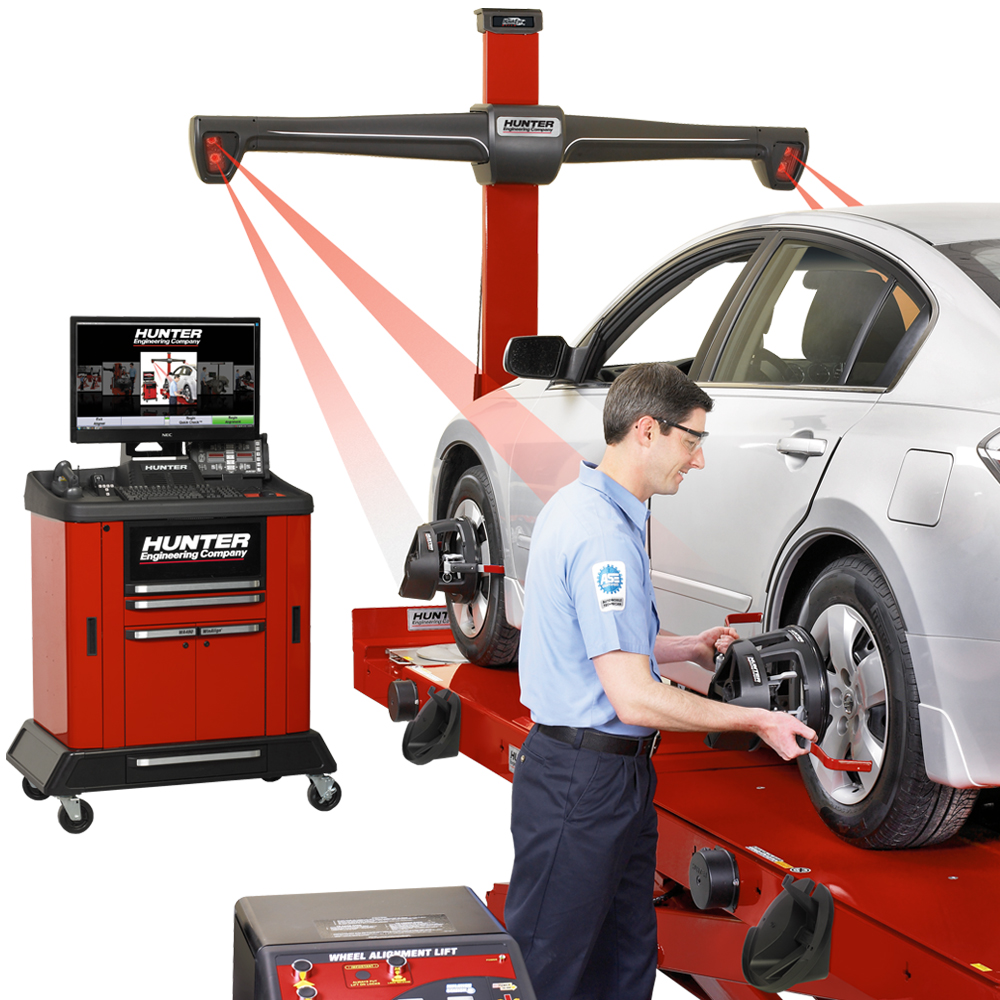
Hunter HawkEye Wheel Alignment System
Ensuring that your car has the correct wheel alignment has a range of benefits to both the driver and the vehicle, such as improving fuel efficiency, tyre life, road handling experience, and more importantly, increase driver and passenger safety.
At T W White & Sons Byfleet Aftersales Centre, we offer wheel alignments using a state of the art Hunter HawkEye Elite Wheel Alignment System, which uses unrivaled technology to quickly and accurately measure your car’s wheel alignment. It boasts the most extensive vehicle information database in the industry. Our specialist trained technicians are then able to carry out the vehicle-specific adjustments required and to set your vehicle’s wheel alignment back to within the manufacturers recommended guidelines.
The HawkEye Elite system uses QuickGrip™ adapters, which enabls the sensors to grip the tyre not the wheel due to their spring-loaded arms. This saves any metal on metal contact and so avoids any potential damage to your cars wheels.
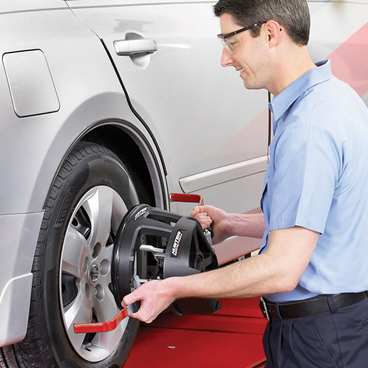
QuickGrip™ wheel sensors attach to the tyres not wheels, saving any potention damage to expensive wheels
Furthermore, the Hunter HawkEye Elite System features a fully integrated alignment system, linking its four high-resolution cameras and wheel sensors to give the most advanced 3D modelling of wheel positions and most accurate alignment measurements. Equally, the Hunter HawkEye Elite has an award-winning CodeLink system which recalibrates the Steering Angle Sensor to ensure the Electronic Stability Control system functions properly, ensuring the safety features of your car’s stability are kept at their maximum.
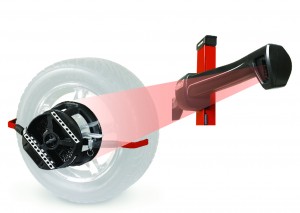
The four high resolution cameras lock onto the four wheel sensors to give unrivaled 3D modeling of wheel alignment
Details of your wheel alignment are printed out in a colourful user friendly and easy to read format, helping you to identify areas of past concern, and giving you total piece of mind that your car is now back within alignment guidelines specific to your make and model.
The primary static suspension angles that need to be measured and adjusted are caster, camber, and toe, and adjustability varies with make and model. Sports vehicles generally allow for the most amount of adjustments.
Camber
Camber refers to the angle of the wheel, measured in degrees. If the top of the wheel is tilted inwards, then the camber is said to be negative; if the top of the wheel is tilted outwards, the camber is said to be positive. Having either a positive or negative camber will cause premature and uneven wear on one side of the tyre. It will also pull the car to the side with the more positive camber.
Caster
Caster is the tilt of the steering pivot or axis, which is measured in degrees.
If the wheel is positioned in front of the load, the caster is said to be positive. Typical settings have the caster set positively somewhere between 3 and 5 degrees, although lower angles are used on heavier vehicles.
If the caster is different from side to side, the vehicle will again pull to the side with the least positive caster. If the caster is equal on each side, but set too negatively, the steering will be light and the vehicle will wander and be difficult to keep in a straight line. If the caster is equal on each side but set too positively, the steering will feel heavy and sluggish.
Toe
The toe of the vehicle is the most influential setting relative to tyre wear.
The vehicle’s toe is the most critical alignment settings relative to tire wear. A car with toe alignment just 0.34 degrees out of specification, will drag its tyres sideways for more than 68 miles over 12,00 miles, the average yearly mileage.
The toe angle identifies the direction of the tires compared to the centerline of the vehicle. Rear-wheel drive vehicle, such as the Mazda MX-5 “push” the front tyres forwards, and as such use positive toe to compensate for suspension movement. This is because as the rear wheels push the front wheels forwards, resistance causes a certain level of drag, which results in rearward movement of the suspension arms against their bushings.
On the other hand, most front-wheel drive vehicles “pulls” the car forward, resulting in forward movement of the suspension arms against their bushings. As such, most front-wheel drive vehicles use a negative toe to compensate for suspension movement.
Equally, toe can also be used to alter a vehicle’s handling experience. Increasing the toe-in will reduce any oversteer, steady the car and enhance high-speed stability.
Similar Articles
Hybrid vs Electric Cars Pros and Cons
Although Hybrid and Electric cars remain a niche market in the UK, their popularity is growing. A brief look at the SMMT registration data for 2022 can give you an idea of where the market currently stands: Battery Electric Vehicles (BEVs): 267,203 cars sold in 2022. A 40.1% increase from 2021. Plug-in Hybrid Electric Vehicles […]
Suzuki announces partnership with Toyota to build Hybrid Cars
Toyota Motor Corporation and Suzuki Motor Corporation today announced their next step in their collaboration. This will focus on Hybrid Car production, including plans to bring production of a new Suzuki hybrid car to Toyota’s UK factories. On Wednesday, Toyota and Suzuki announced an agreement to begin collaboration on electric vehicles and other in-car […]
Goodbye spark plugs, hello SKYACTIV-X!
Mazda announces their long-term “Sustainable Zoom-Zoom 2030” plan, including the introduction of a spark plug free petrol engine in 2019 Back in February we wrote about Mazda’s rumoured research into a compression based petrol engine to replace their current spark ignition technology. At the time, their had been no word from Mazda on the topic. […]
